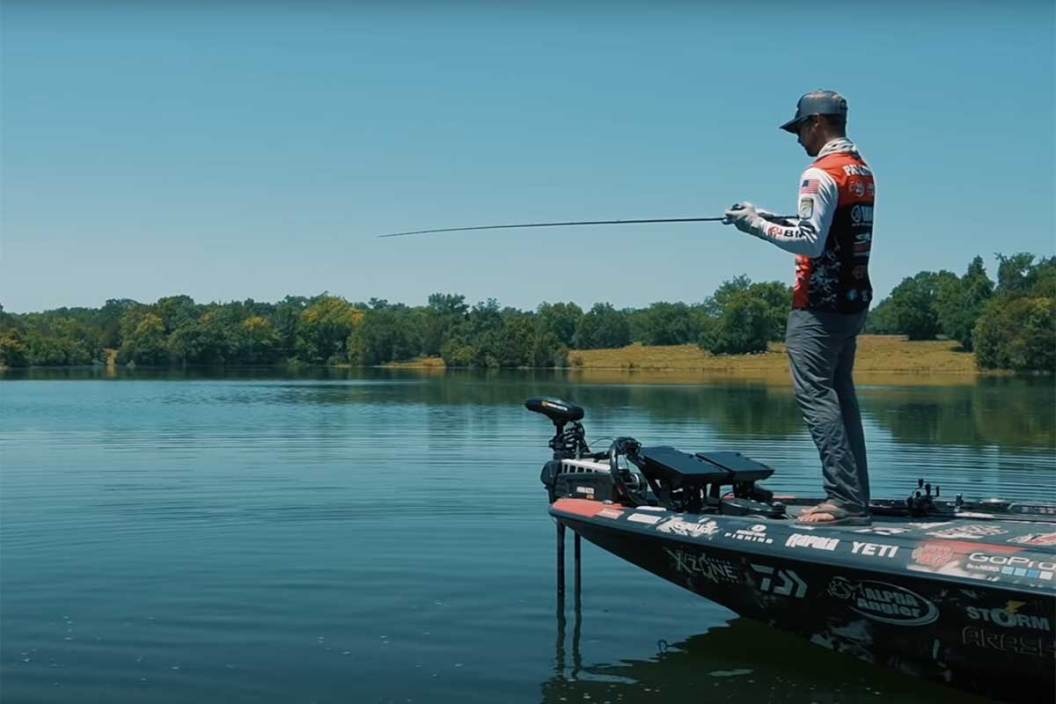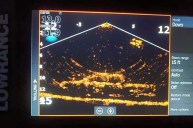The emergence as forward-facing sonar as an essential pro fishing tournament tool is convincing weekend anglers that it's well worth it.
Bass fishing inherently contains some element of suspense. Where will you find 'em? What will they bite? Will they even bite?
Prudent decisions and accurate casts to relevant targets have always lessened the uncertainty — except for suspended fish. The bane of tournament types and recreational anglers alike, bass holding in the water column have proven consistently elusive, as the lack of reference or relation creates a head-scratching game of cat-and-mouse.
Times have changed, though; as the past handful of years have seen the advantage decidedly shifting with the advent of forward-facing sonar, or FFS. Literally redefining open water fishing, this technology offers a simple, yet profoundly impactful benefit: Seeing what's ahead of you before what's ahead of you sees you.
"It completely changes how you fish but also strengthens the ways you used to fish," said Bassmaster Elite Patrick Walters, who put on an FFS clinic during his record-setting 2020 win on Lake Fork. "It's your eyes under water. Within 100 feet, I can now see a stump, or some shallow grass where I couldn't see it (from the surface) because the water's deeper or it's colored.
"You can cast a lot farther than 100 feet, but that allows you time and space to make (effective) decisions."
How Forward-Facing Sonar Helps
Displaying realtime images, technologies including Garmin PanOptix LiveScope, Humminbird MEGA Live, and Lowrance Active Target exponentially improve efficiency by removing much of the guesswork. Moreover, missed opportunities are less likely, as you not only see what you're casting to, but also any indecisive followers in need of convincing.
Walters, who prefers LiveScope, appreciates how forward-facing sonar improves the decision-making process. As he notes, fish have different personalities, so reading their body language and their response — timid or aggressive — toward various baits makes him more efficient on the water.
"Where you used to pull up on a spot and say 'The fish aren't here or they're not biting,' [now] you might find that the fish are there, but they're not in an active mood due to the weather, the water conditions or something.
"You might throw a couple of baits in there, see how the fish are not reacting, and say 'I'll leave and come back.' Then you come back in two hours when [conditions] change and you start catching them. It used to be that you'd sit there for three hours wondering 'Why have I not caught anything?'"
Extending well past open water suspending fish, FFS also plays a key role in locating bass amid standing timber, along bluff walls, under boat docks, over broad flats, and pretty much anywhere that the fish could be. Spotting bait schools and fish-attracting structure well before you enter the encroachment zone has become the go-to move.
Fishing Performance Impacted
Targeting standing timber on Lake Fork, Walters meticulously dialed in exactly how his fish were positioning amid the flooded forests, watched their reactions and made the key bait adjustments that allowed him to claim the victory with a 4-day total of 104 pounds, 12 ounces and an all-time Bassmaster Elite record margin of 29-10.
"There are so many fish in Lake Fork with what Texas Parks and Wildlife does to manage that as a trophy fishery, you know in your mind there are thousands of 4- to 6-pound fish in that lake everywhere you go," Walters said. "Forward-facing sonar allowed me to to just go out there and look around to find out where those fish were setting up, what they were feeding on, and how to trigger those fish."
Comments and opinions like those are becoming more and more frequent among pro anglers.
Looking back to 2017, reigning Bassmaster Classic champion Jason Christie notes that an early version of PanOptix clearly delivered his Elite win on Lake St. Clair. He was so in-tuned to this amazing new tool that he was only casting to fish he saw. At this year's Elite Series opener on the St. Johns River, John Crews watched fish following his jerkbait on LiveScope and either adjusted his cadence or closed the deal with a dropshot.
Cory Johnston notched a second-place finish at the 2020 Elite on Lake St. Clair after his LiveScope showed him a sunken barrel that attracted big smallmouth. During this year's Elite on the Harris Chain, Scott Martin used his LiveScope to scan potential spawning pockets amid shoreline vegetation to spot fish movement.
It's become such a constant that it can't be ignored: forward-facing sonar is changing the way we fish. It seems like only a matter of time before it really takes off among the more casual, non-competitive anglers, not to mention guides.
Don't Overdo It
Humans tend to fixate on anything new and novel, but Walters warned against granting forward-facing sonar magic wand status. Recon, perspective, insight — they're all applicable terms, but a crutch this is not.
"You still have to make them bite," Walters said. "Everybody has it now and the fish are getting wise to it. They're starting to shy away from the sound.
Walters' suggestion: Visit a familiar spot — a dock, a laydown, or bridge piling — then pole down and just look at it. You'll know the basic structure, but with FFS you'll be able to see what bait pods look like, what bass look like, and how your various baits appear in the water.
"Get used to the technology, but don't get too dependent on it," Walters said. "You can get too hooked into it that you get tunnel vision and you're not looking at everything else.
"It is a tool to help your fishing, not something you should solely focus on. Incorporate it into your arsenal, but don't make it your main gun. You still have to fish."




